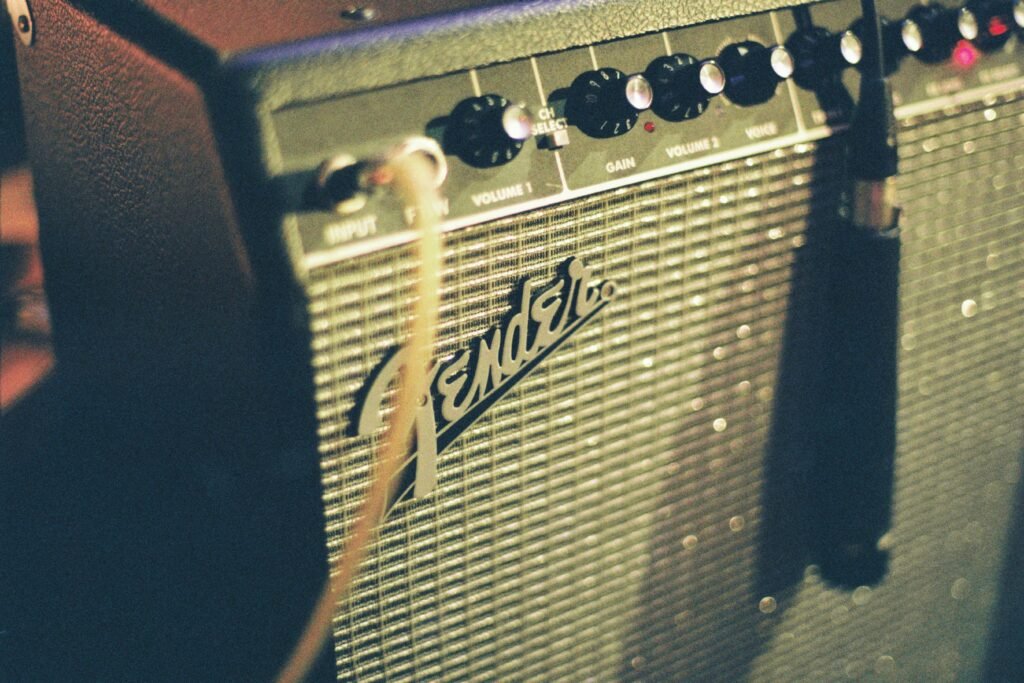Released in 1989, Doolittle stands as a defining moment in the Pixies’ catalog, a band already known for their unconventional blend of punk rock, surf, and alternative noise. At the time of its release, the Pixies were still a relatively underground entity, with their earlier work—Surfer Rosa—already showcasing a propensity for bold experimentation and dynamic contrasts. Doolittle, however, marked a leap forward both sonically and in terms of cultural impact, pushing the boundaries of what alternative rock could be in the late ’80s and early ’90s.
Where Surfer Rosa had been jagged and raw, Doolittle strikes a more polished but no less frantic tone. It is a record teeming with frenetic energy, but it is also more accessible, blending catchy melodies with the same unrelenting distortion that made their earlier work so groundbreaking. The album blends quiet, intimate moments with blasts of raucous noise, a trait that would become a hallmark of the band’s sound, later influencing a generation of alternative rock bands.
Sonic Exploration

From the first distorted strums of Doolittle, it’s clear that the album is a masterclass in sonic precision without losing its raw edge. Producer Gil Norton brought a crispness and clarity to the production that was a noticeable departure from the raw, unvarnished sound of the Pixies’ previous album, Surfer Rosa. Norton’s meticulous approach emphasized the dynamics and textures of the band’s sound, giving Doolittle an immediacy and a polish that managed to enhance its visceral energy rather than dull it. This cleaner production style served the album’s themes of unease and surrealism by juxtaposing sharp, pristine audio quality with the chaotic undercurrent of the music itself.
Musical Arrangements
The musical arrangements are as unpredictable as they are compelling. Joey Santiago’s guitar work is a standout element, veering from jagged, discordant riffs to ethereal, echoing leads, often within the same song. Tracks like “Debaser” and “Wave of Mutilation” showcase Santiago’s ability to craft melodies that feel simultaneously off-kilter and infectious. Kim Deal’s basslines are deceptively simple, grounding the chaos with pulsing rhythms, while her backing vocals add a hauntingly melodic contrast to Black Francis’ abrasive yelps and screams. David Lovering’s drumming anchors the chaos, transitioning effortlessly between pounding urgency and stripped-back minimalism.
Vocally, Black Francis delivers one of his most dynamic performances. His ability to toggle between whispered confessions and primal screams mirrors the album’s thematic exploration of duality—beauty and violence, serenity and madness. The arrangements often juxtapose his frenetic vocal energy with Kim Deal’s more restrained harmonies, creating a tension that feels central to the album’s identity.
Genre Elements
Genre-wise, Doolittle defies easy categorization, pulling influences from punk, surf rock, post-punk, and even hints of folk and pop. Tracks like “Here Comes Your Man” flirt with traditional pop structures, while songs like “Tame” and “Dead” lean heavily into aggressive punk aesthetics. The band’s knack for blending genres is particularly evident in “Monkey Gone to Heaven,” where they weave together surreal lyricism, atmospheric production, and an almost orchestral arrangement to craft a track that feels as alien as it does anthemic.
Lyrical Analysis

At its core, Doolittle is a lyrical labyrinth, a surreal exploration of disjointed themes that somehow coalesce into a powerful emotional experience. Black Francis’ lyrics on the album are enigmatic, often veering into cryptic and fragmented storytelling. Central themes like destruction, existential dread, and the tension between humanity and nature emerge, woven through surrealist imagery and biblical references. The lyrics oscillate between the personal and the mythological, giving Doolittle an otherworldly yet deeply human feel.
Recurring Themes
Recurring motifs punctuate the album, such as violence and decay, which appear most vividly in tracks like “Debaser” and “Wave of Mutilation.” In “Debaser,” Francis references Luis Buñuel’s surrealist film Un Chien Andalou with the visceral image of “slicing up eyeballs,” a metaphor that embodies the Pixies’ ethos of unsettling the listener while inviting them to dance along. Similarly, “Wave of Mutilation” uses poetic brevity to depict apocalyptic imagery, blending themes of environmental collapse with personal disintegration.
Biblical allusions are another prominent feature, with songs like “Monkey Gone to Heaven” addressing humanity’s destructive tendencies through a cryptic narrative of ecological ruin and divine retribution. The repeated lines “This monkey’s gone to heaven” anchor the song’s existential themes, creating a haunting refrain that lingers long after the song ends. Black Francis doesn’t provide easy answers in these lyrics, instead presenting fragments of stories and symbols that leave the listener to piece together their meaning.
The lyrical style of Doolittle is anything but straightforward. Francis leans heavily into abstraction, often favoring mood and atmosphere over linear storytelling. Lines are often elliptical, loaded with poetic imagery that invites endless interpretation. This lyrical complexity enhances the album’s surreal and dreamlike quality, making each listen feel like a new experience as listeners unearth different meanings in the words. Even in moments where the lyrics seem nonsensical or jarring, such as the repeated primal screams of “Tame,” they feel deliberately placed to evoke raw emotion rather than coherent thought.
Emotional Impact
Emotionally, the lyrics add a profound depth to Doolittle. The album’s surrealism can make its themes feel universal, resonating on a subconscious level. Songs like “Hey” and “Gouge Away” channel vulnerability and anguish through sparse yet impactful phrases, creating moments of intimacy amidst the chaos. Even at their most cryptic, the lyrics evoke a visceral reaction—whether it’s discomfort, awe, or a strange sense of catharsis.
Cohesion and Flow

One of Doolittle’s greatest strengths lies in its balance of chaos and cohesion. The album feels like an intricate collage, with each track presenting its own distinct personality while contributing to the greater whole. The sequencing of songs is deliberate, guiding the listener through a volatile yet surprisingly fluid emotional and sonic journey.
The album opens explosively with “Debaser,” an adrenaline-fueled anthem that sets the tone for the Pixies’ unique blend of irreverence and intensity. This energy carries through the driving rhythms of “Tame” and the surf-infused breeziness of “Wave of Mutilation,” creating a strong opening act that showcases the band’s range without feeling disjointed. Tracks like “I Bleed” and “Here Comes Your Man” provide moments of relative calm, offering a contrast to the aggressive, primal energy of songs like “Dead” and “Crackity Jones.” These shifts in tone feel organic rather than jarring, giving the album a dynamic, almost cinematic quality.
While Doolittle doesn’t follow a strict narrative arc, it does maintain a thematic and emotional progression. Early tracks are marked by a playful yet anarchic energy, which gives way to darker and more introspective tones as the album unfolds. For instance, “Monkey Gone to Heaven” serves as a thematic centerpiece, grappling with existential and environmental dread, before the album plunges further into raw, visceral territory with songs like “Gouge Away.” This ebb and flow of intensity keeps the listener engaged, making the album feel like a journey rather than a mere collection of songs.
Thematic Consistency
Thematically, Doolittle maintains a remarkable consistency. The tension between beauty and violence, order and chaos, recurs throughout both the lyrics and the music. Even when the tone shifts between manic (“There Goes My Gun”) and melancholic (“Silver”), the underlying themes of alienation and unease provide a unifying thread. The production further reinforces this cohesion, with Gil Norton’s polished yet edgy approach ensuring that every track feels like part of the same sonic universe.
Stylistically, the album’s genre-blurring approach adds variety without sacrificing unity. Whether dipping into surf rock, punk, or atmospheric balladry, the Pixies’ distinctive sound remains intact, providing a consistent foundation for the album’s eclectic influences. Even the more experimental tracks like “La La Love You,” with its tongue-in-cheek whistling and minimalist lyrics, feel like natural extensions of the album’s irreverent spirit.
Standout Tracks and Moments
While Doolittle is a remarkably consistent album, several tracks rise to the surface as defining moments of its artistic brilliance. Each song contributes to the album’s chaotic charm, but the following highlights showcase the Pixies at their most inventive, emotionally resonant, or downright unforgettable.
Highlight Key Tracks
“Debaser”
The album’s opener, “Debaser,” is quintessential Pixies: loud, brash, and irresistibly catchy. Its snarling guitar riff, driven bassline, and Black Francis’ gleeful yelps about slicing up eyeballs and surrealist cinema encapsulate the band’s ethos. It’s an anthem of rebellion and absurdity, perfectly setting the tone for the rest of the album.
“Here Comes Your Man”
Perhaps the most accessible track on the album, “Here Comes Your Man” stands out for its jangly guitars and clean, melodic structure. It’s a rare moment of straightforward pop sensibility on Doolittle, offering a bright counterpoint to the darker, more abrasive songs. Despite its polished sound, the track retains the band’s trademark quirkiness, making it an enduring favorite.
“Monkey Gone to Heaven”
This track is arguably Doolittle’s thematic centerpiece, blending surreal and apocalyptic imagery with an atmospheric arrangement that builds to a cathartic climax. The repeated chant of “If man is five, then the devil is six, then God is seven” delivers a haunting mantra that lingers long after the song ends. It’s a masterful fusion of cryptic lyricism and dynamic production that captures the existential weight of the album.
“Gouge Away”
Closing the album with a simmering intensity, “Gouge Away” is a slow-burning highlight. Its sparse verses explode into visceral choruses, with Black Francis’ anguished vocals delivering a powerful emotional punch. The interplay between Santiago’s distorted guitar lines and Deal’s hypnotic bass creates a tense, brooding atmosphere that perfectly encapsulates the album’s themes of destruction and catharsis.
Memorable Moments
Francis’ Scream in “Tame”
The primal, guttural screams in “Tame” are unforgettable, embodying the raw energy and unpredictability of Doolittle. These moments feel less like performance and more like an exorcism, making the track a visceral highlight.
The Bassline in “Wave of Mutilation”
Kim Deal’s bassline in “Wave of Mutilation” is deceptively simple but utterly hypnotic. It anchors the song’s dreamy surf-rock vibe, making it one of the album’s most transportive tracks.
The Silence in “I Bleed”
One of the album’s most striking moments occurs in “I Bleed,” where a sudden, pregnant pause punctuates the relentless rhythm of the song. This use of silence heightens the tension, pulling the listener into the Pixies’ world of unpredictability.
The Whistling in “La La Love You”
With its playful whistling and tongue-in-cheek romantic lyrics, “La La Love You” feels like a subversive love song. The whistling is both charming and unsettling, perfectly encapsulating the album’s ability to balance whimsy with unease.
The Outro of “Gouge Away”
As the album’s final track fades out, the relentless repetition of the phrase “gouge away” paired with Santiago’s searing guitar lines leaves a haunting, unresolved feeling. It’s a fitting end to an album defined by tension and contrast.
Artistic Contribution and Innovation

When Doolittle emerged in 1989, it landed like a seismic shockwave within the music industry, redefining the possibilities of alternative rock and setting a new standard for the genre. At a time when hair metal and synth-heavy pop dominated the airwaves, the Pixies carved out a unique niche that eschewed convention in favor of raw emotion, sonic experimentation, and unapologetic weirdness.
Place in Genre/Industry
Doolittle occupies a pivotal place in the evolution of alternative rock. While the genre had already begun to take shape with bands like R.E.M., Sonic Youth, and Hüsker Dü, the Pixies pushed the boundaries further with their volatile mix of melodic accessibility and abrasive chaos. Their signature loud-quiet-loud dynamic, exemplified throughout Doolittle, would later become a defining feature of the alternative rock and grunge movements. Nirvana’s Kurt Cobain famously cited the Pixies as a key influence, particularly when crafting Nevermind’s breakout single, “Smells Like Teen Spirit.”
The album also broke new ground in terms of its thematic audacity. While many rock albums of the era leaned on straightforward romantic or rebellious themes, Doolittle plunged into surreal and unsettling territory. Its lyrics grapple with death, destruction, and existentialism, creating a dark undercurrent that stood in stark contrast to the polished escapism of mainstream rock. Yet, its undeniable hooks and infectious energy allowed it to appeal to a broader audience, bridging the gap between the underground and the mainstream.
Innovation
One of Doolittle’s most innovative qualities is its fearless approach to genre fusion. While rooted in punk’s rebellious ethos, the album draws freely from surf rock, post-punk, noise rock, and even pop. Tracks like “Wave of Mutilation” showcase this eclecticism, blending dreamy surf-inspired melodies with lyrical themes of decay and destruction. This fusion of disparate influences was groundbreaking, offering a blueprint for the genre-fluid experimentation that would characterize much of the 1990s alternative rock scene.
The production style was another area of innovation. Working with producer Gil Norton, the Pixies crafted an album that was both polished and unhinged. Norton’s clean, meticulous production brought clarity to the band’s chaotic sound, highlighting the intricate interplay between the instruments while preserving their raw edge. This balance between polish and grit was relatively uncommon in the punk and alternative scenes of the time, making Doolittle a sonic outlier.
Perhaps most revolutionary was the band’s approach to dynamics. The loud-quiet-loud structure, while not entirely new, was perfected on Doolittle. Tracks like “Tame” and “Gouge Away” showcase the band’s ability to build tension through restrained verses, only to unleash it in explosive choruses. This dynamic contrast became a hallmark not only of the Pixies’ sound but of the alternative and grunge movements that followed.
Finally, Doolittle’s thematic depth set it apart from its contemporaries. Its surreal and cryptic lyrics invited endless interpretation, creating an intellectual engagement that elevated it beyond a mere collection of songs. Black Francis’ lyrical melding of highbrow references (like Luis Buñuel’s Un Chien Andalou) with visceral, primal imagery was a bold move that challenged listeners to think while they rocked out.
Closing Thoughts

Doolittle stands as a landmark album in the history of alternative rock, a near-perfect blend of chaos and melody that showcases the Pixies at the height of their creativity. Its strengths are undeniable: a daring exploration of dynamics, surreal and thought-provoking lyrics, and a genre-blurring approach that set the stage for countless bands to follow. The album’s production, helmed by Gil Norton, strikes a delicate balance between polish and rawness, giving every song a sharp, visceral edge. Tracks like “Debaser,” “Monkey Gone to Heaven,” and “Gouge Away” highlight the Pixies’ ability to create music that is as emotionally impactful as it is sonically adventurous.
However, Doolittle is not without its minor flaws. The album’s unpredictable nature, while a hallmark of its charm, can feel slightly uneven at times. Tracks like “Silver” or “Crackity Jones,” while intriguing in their own right, may not resonate as strongly with every listener compared to the album’s standout moments. This unevenness prevents Doolittle from achieving complete perfection, though it does little to detract from its overall brilliance.
As a whole, Doolittle occupies a pivotal place in the Pixies’ career and the alternative rock canon. It bridges the raw experimentation of Surfer Rosa with the more melodic sensibilities the band would explore later in Bossanova and Trompe le Monde. For listeners, the album remains a thrilling and unpredictable journey, one that offers new layers of meaning and enjoyment with each listen. Its impact on music is immeasurable, having influenced not only the grunge movement but also countless genres that value boldness and innovation.
Official Rating
An 8/10 feels fitting for Doolittle. It is a groundbreaking and highly influential album that balances innovation with accessibility. Its few moments of unevenness slightly temper its overall impact, but this is a minor quibble in an otherwise stunning work of art. The rating reflects not only the album’s immense artistic merit but also its enduring ability to engage and inspire listeners. Doolittle is, quite simply, a must-listen for anyone with a love for music that dares to push boundaries.
